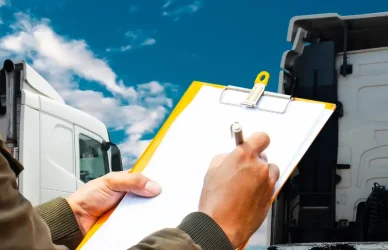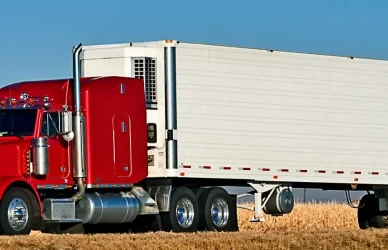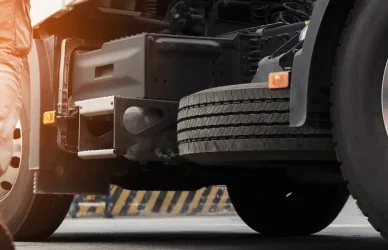Several Statehouses across the U.S. have been discussing changes to speed limit rules. Here’s what you need to know.
Montana
The state of Montana has expanded the powers of its Transportation Commission to adjust speed limits across the state. Previously, the state maintained an 80-mph speed limit for cars and a 70-mph limit for trucks on rural interstates, although the commission was permitted to lower these limits if necessary. Now, thanks to a new law signed by Governor Greg Gianforte, the commission can also raise speed limits if deemed appropriate. This decision is based on concerns regarding split speeds and their inherent difficulties, as explained by Montana Department of Transportation highways and engineering administrator, Dustin Rouse.
“One of the things we found is in locations that have high large commercial vehicle, semi use, that mix if you have that speed differential can lead to an increase in crashes.”
In 2019, the state DOT took action to tackle safety concerns related to the speed difference on U.S. 212, in the stretch between Crow and the Wyoming border. Through a safety review, a decision was made to reduce the maximum speed for cars from 70 to 65 mph, in line with the truck speed limit.
Senator Barry Usher, a representative from Laurel, has stated that speed limits on multiple state roads require modification.
“Our department of transportation, their goal is to be safe, but it’s also to keep commerce moving,” he said.
The new rule takes effect Oct. 1.
Alabama
Alabama enacted a new law to regulate speed limits on county-maintained roads within city limits. The rule change prohibits municipalities from making speed limit adjustments without a prior civil engineering speed study and traffic investigation. The move aims to ensure road safety and prevent speed limit changes that could pose a safety risk. Cities must seek approval from the county engineer after the investigation to implement any changes. This change is necessary to prevent speed limit increases that exceed the design and safety of the road while also avoiding unjustifiable speed limit reductions.
North Dakota
Efforts to increase top speeds on North Dakota’s highways have been thwarted twice, despite state law already allowing speeds of 75 mph on interstates and 70 mph on four-lane divided highways. Two-lane highways are limited to 65 mph. Governor Doug Burgum vetoed a bill in March that aimed to raise speed limits to 80 mph for all drivers on interstates, citing safety as his primary concern.
“Increasing the maximum speed limit on interstate highways increases both the risk of speed-related crashes and the potential severity of such crashes,” Burgum wrote in his veto message.
According to a study by the Insurance Institute of Highway Safety, increasing the legal top speed by just 5 miles per hour leads to an alarming 8.5% rise in fatality rates on interstate highways and freeways. Burgum cited this study in his message as well.
“This increased risk runs counter to the goals of vision zero, North Dakota’s multiple-agency effort to eliminate fatalities and serious injuries caused by motor vehicle crashes.”
In an attempt to enhance road safety, a new seatbelt rule allowing primary enforcement was approved on the same day as the veto. Effective from August 1, all passengers must be buckled up.
Although top-speed-increase advocates hoped for legislative action, their attempt failed. House lawmakers amended SB2168 with provisions for speeding fines, traffic fines, and penalties, along with an increase in the speed limit. However, the Senate refused to concur with the House changes, leading to a conference committee meeting. Despite this, the full Senate rejected the amended bill with a 39-8 vote, and further work is needed to revise speed limit rules.
New York
New York is currently facing a time crunch to pass two bills that would increase the maximum speeds for cars and trucks on highways and limited-access roads. Currently, all vehicles are permitted to travel at 65mph. However, if these bills in the Assembly and Senate are passed, all vehicles would be authorized to travel at 70mph. The proposed change would grant the state DOT and New York Thruway Authority the power to implement the increase in speed. According to Senator Tom O’Mara, a Republican from Big Flats, this change would bring New York in line with many other states’ maximum speed limits.
“The majority of states across the country have state speed limits that exceed 65 mph,” O’Mara wrote. “New York has failed to keep up with the rest of the country by not adopting a more efficient speed limit.
“This bill would correct this inefficacy by allowing for a 70-mph speed limit where appropriate.”
Both bills, S2209 and A5044, remain in their respective transportation committees. The regular session is scheduled to end June 8.
North Carolina
A proposed House bill in North Carolina aims to increase the top speed limit on the state’s fastest roadways from 70 mph to 75 mph. H386 would give the state Department of Transportation authority to approve the change for any interstate or controlled-access highways considered “safe and reasonable” inside or outside a municipality’s corporate limits. The bill’s advocates argue that drivers already exceed 70 mph on some highways that could safely handle faster speeds. Currently, the bill awaits action by the House Transportation Committee.
Texas
The Texas legislature has passed a bill that enables the use of variable speed limits on the state’s highways. Under the proposal, the Texas Transportation Commission would have the ability to lower speed limits temporarily in response to weather, road construction, congestion, or other factors that affect traffic flow. The new regulations would require a thorough engineering review and prohibit variable speeds from being set more than ten miles per hour lower than posted speed limits. Critics worry that the changes will be abused to slow traffic or set speed traps, but the bill explicitly bans the use of variable speed limits to direct traffic toward toll roads.
Source: Land Line











